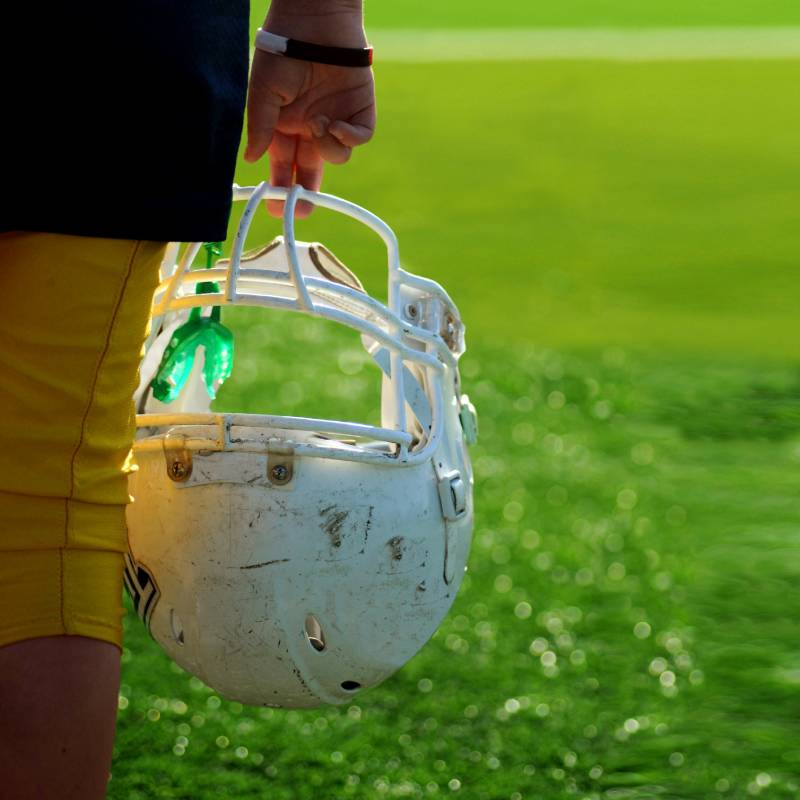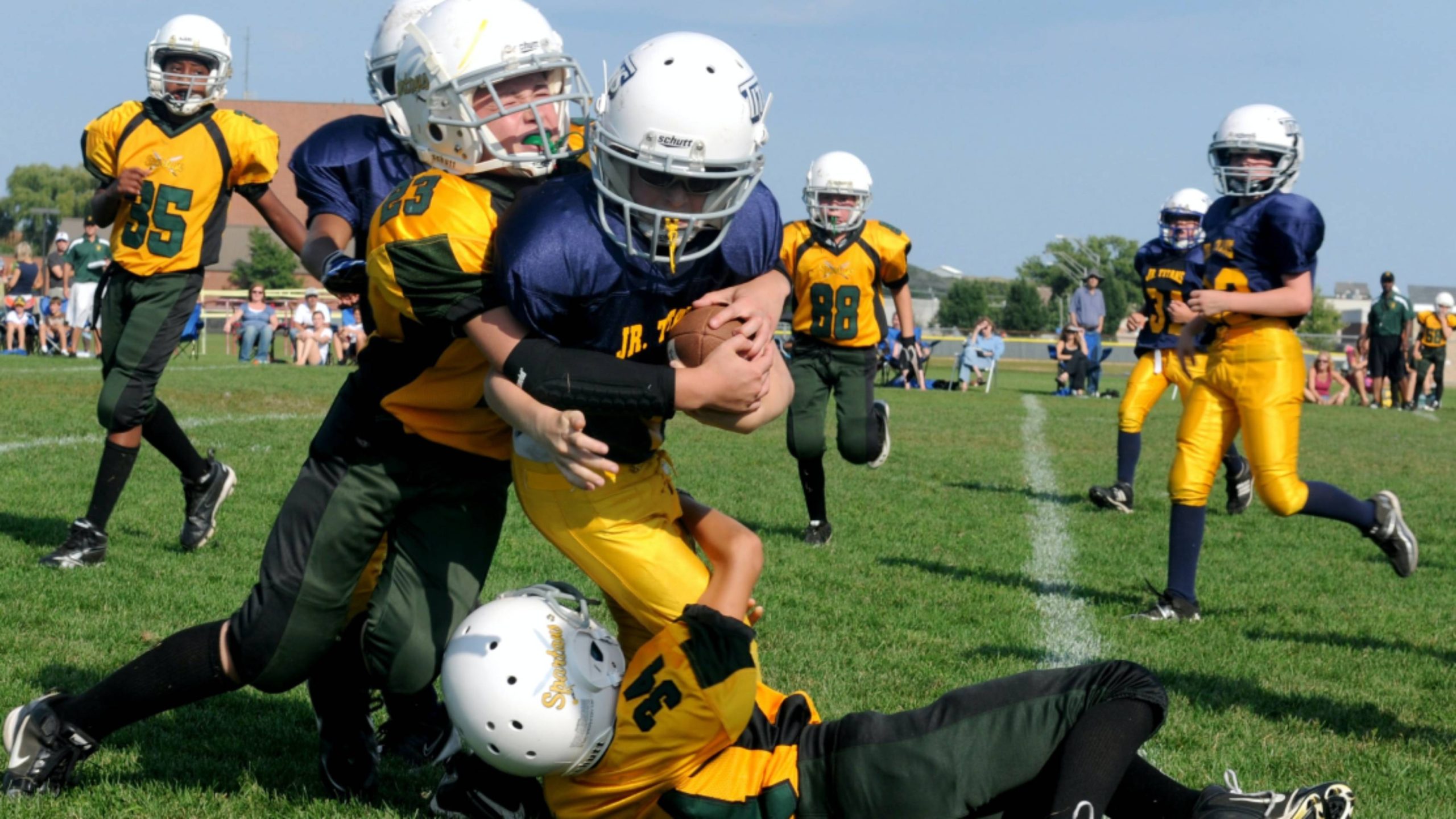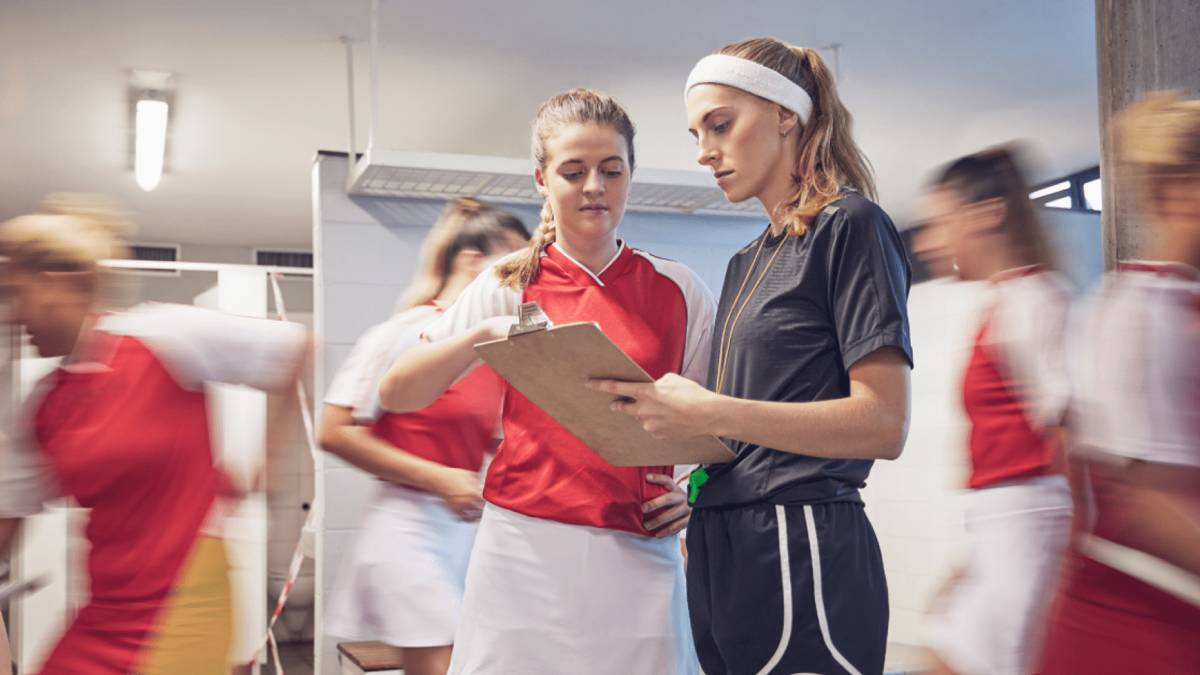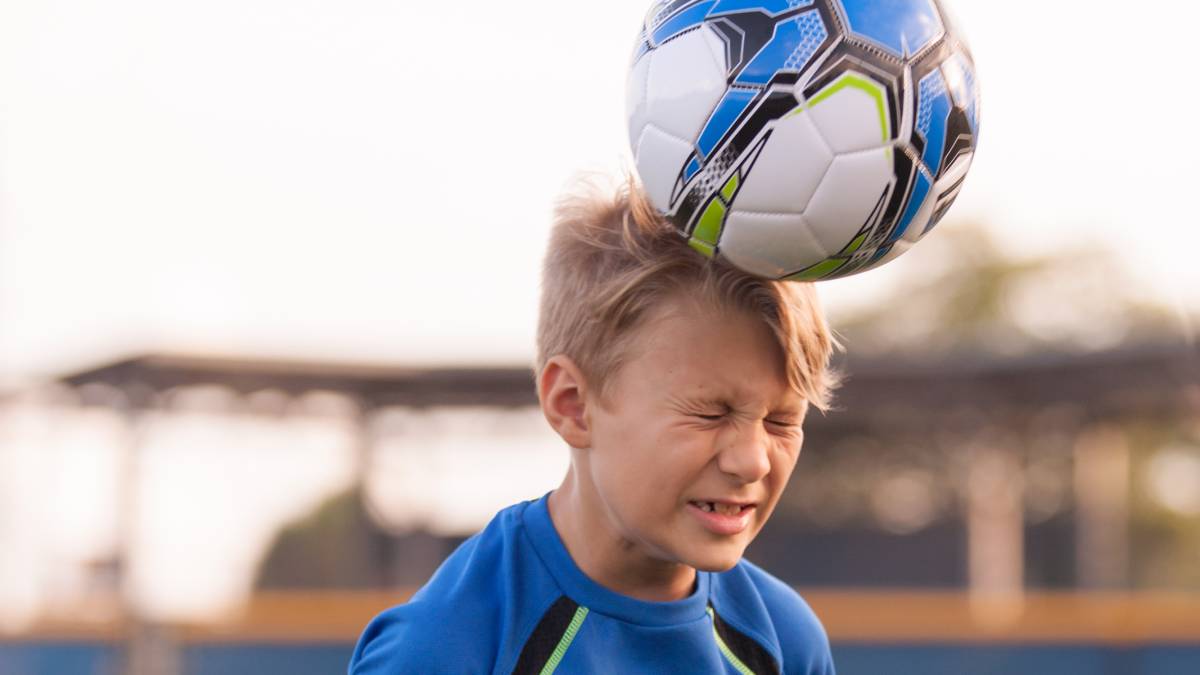The Ultimate Guide to Sports Concussion

Although often underestimated as a silent epidemic, concussions are one of the most common injuries in the world of sport. Their impact can be devastating, both in the short and long term, affecting the health and well-being of athletes at all levels. Faced with this reality, it becomes imperative to understand concussions in depth, from their causes and mechanisms to their management, prevention and awareness.
Causes and Mechanisms of Concussion
Concussions result from a variety of causes and mechanisms, often associated with contact sports and intense physical activity. This section explores the main causes of concussion, the physiological processes that occur in the brain during injury, and how to prevent the risks on the field.
Main Causes of Concussion in Contact Sports
Contact sports, such as soccer, rugby, field hockey and boxing, are often associated with an increased risk of concussion due to the physical and competitive nature of these activities [1]. Contact sports, in particular, present an increased risk of concussion due to the physical and competitive nature of these activities.
Here are some of the main causes of concussions in these sports:
Collision with other players:
- American soccer: Violent contact when tackling, blocking or head-butting between players can lead to concussion.
- Rugby: Collisions during phases of play, such as scrummaging or regrouping, as well as contact during tackling and ground play, are frequent causes of concussion.
Falls or impacts with objects:
- Ice hockey: Falls on the ice, collisions with boards or impacts with opponents’ pucks or sticks can cause concussions.
- Soccer: Falls during aerial duels, collisions with the ground or contact with other players during headers can also cause head injuries.
Direct blows to the head:
- Boxing: Direct blows to the head during sparring are an obvious cause of concussions in this sport, due to the direct impact on the head.
- MMA (Mixed Martial Arts): Punches, knee strikes or kicks to the head during sparring can lead to traumatic brain injuries and concussions.
Impact repetition :
- Soccer: Even without direct contact to the head, the repetition of impacts sustained during play, such as heading the ball or contact during duels, can lead to concussions due to the accumulation of microtraumas.
By identifying the main causes of concussion in contact sports, coaches, players and sports organizations can implement appropriate prevention and management strategies to reduce the risk of head injury and ensure the safety of participants.
Understanding Concussion: What Happens in the Brain
To fully understand concussions, it’s important to understand the physiological processes that occur in the brain during an injury. The basic mechanisms of concussion include how external physical forces drive:
A sudden movement of the brain in the skull [1]:
- During a sudden impact or acceleration, the brain can undergo a sudden movement inside the skull.
- This rapid movement can deform brain tissue and damage neurons, blood vessels and supporting structures.
Neuronal damage and chemical disturbances:
- Abrupt movement of the brain can lead to neuronal lesions, such as stretching or tearing of axons, the nerve fibers responsible for transmitting electrical signals in the brain.
- These lesions can trigger chemical disturbances in the brain, such as imbalances in levels of neurotransmitters, which are responsible for transmitting signals between nerve cells.
Inflammation and immune response:
- In response to a concussion, the brain may trigger an inflammatory and immune response in an attempt to repair tissue damage.
- This inflammation can lead to brain swelling and increased intracranial pressure, which can worsen symptoms and prolong recovery time.
By understanding the underlying mechanisms of concussion, it becomes clearer why these injuries require prompt and appropriate management to minimize damage and promote successful recovery.
Concussion: Preventing risks in the field
Preventing concussions on the field requires a combination of prevention and safety measures. This section examines strategies and practices aimed at reducing the risk of concussion during sports practice, such as:
Teaching safe playing techniques:
- American Football: Emphasizing correct tackling techniques, by teaching players to use their shoulders rather than their head to tackle, can reduce the risk of concussion during physical contact.
- Rugby: Teaching players to approach tackles safely, by avoiding contact to the head and favouring underneath tackles, can help prevent head injuries during phases of play.
The application of game rules to limit violent contact:
- Soccer: By enforcing strict rules against dangerous contact, such as elbowing or unsportsmanlike gestures, officials can help prevent head injuries during matches.
Basketball: By enforcing strict rules against excessive contact and deliberate hitting, referees can reduce the risk of concussion during competition.
Encouraging the use of appropriate protective equipment:
- Ice hockey: Wearing field hockey helmets with a protective chin strap and visor can help prevent head injuries caused by falls on the ice or blows from sticks.
- Soccer: The use of soccer helmets with good shock absorption can offer additional protection against impact during physical contact.
Fostering a Culture of Respect and Fair Play:
- All sports: Promoting a culture of respect between players, coaches and officials, as well as the importance of fair play and safety, can help reduce risky behavior and incidents of dangerous play.
By identifying and correcting potential risk factors, we can help create a safer sporting environment and prevent head injuries.
Concussion statistics
- In 2022, according to Statistics Canada, around 65% of reported concussions were attributed to falls [2].
- In 2022, about 24% of Canadians reporting a concussion were involved in physical activity at the time of the incident, representing about 63% of youth aged 12 to 17. The sports involved included soccer, field hockey, ringette and skiing, among others [2].
- It is estimated that between 20% and 40% of athletes sustain a concussion annually [1].
- Approximately 20% of concussed individuals will experience persistent symptoms beyond the usual recovery period of two to three weeks after the incident [1].
- Concussions account for between 9% and 12% of high school sports injuries [3].
Types of Shock Likely to Cause Concussion
Several types of shock can cause a concussion, each with its own characteristics and consequences [4] :
- Linear Shock: involves a direct impact to the head in a specific direction, causing a linear movement of the brain inside the skull. These shocks are common in contact sports such as American soccer and ice hockey.
- Rotational shocks: involve a rotational movement of the head, causing a rotary movement of the brain inside the skull. These shocks are often associated with sports such as gymnastics, snowboarding and freestyle skiing.
Managing Concussion: From Recognition to Healing
Effective concussion management is essential to ensure optimal recovery and minimize the risk of long-term complications. This section explores the different stages of concussion management, from recognition of symptoms to recovery and rehabilitation.
Recognizing the Signs and Symptoms of Concussion
The first step in concussion management is to quickly recognize the signs and symptoms that may indicate injury. These symptoms can vary from person to person and may include [5]:
Physical Symptoms:
- Persistent or severe headaches after a blow to the head.
- Nausea or vomiting for no apparent reason.
- Increased sensitivity to light or noise.
- Dizziness or vertigo.
- Excessive fatigue or unusual feeling of weakness.
Cognitive Symptoms:
- Confusion or disorientation, particularly concerning the game in progress.
- Memory problems, difficulty remembering recent events or concentrating.
- Difficulty understanding or following instructions given by the trainer.
- Slow or confused responses to questions.
Emotional and Behavioral Symptoms:
- Irritability or sudden, unexplained mood swings.
- Increased anxiety or nervousness.
- Changes in sleep patterns, such as insomnia or excessive sleeping.
- Feeling sad or depressed for no obvious reason.
Sensory Symptoms:
- Blurred or double vision.
- Ringing in the ears.
- Tingling or numbness in arms or legs.
- Impaired sense of taste or smell.
It’s crucial that athletes, coaches and health professionals are able to identify these signs and take immediate action if concussion is suspected.
Field Concussion Management Protocols
If concussion is suspected during a sporting activity, it’s important to follow specific protocols to ensure proper management on the field [6]. These protocols may include:
Initial assessment of symptoms:
- The coach or medical staff should immediately assess any player who shows signs or symptoms of concussion.
- A series of standard questions can be asked to assess the player’s cognition, memory and emotional state.
Immediate withdrawal from the game:
- The player removed from the game should receive appropriate first aid, including rest and ice to reduce inflammation.
- It is important to closely monitor the player’s condition and look for signs of deterioration, such as vomiting or loss of consciousness.
Administration of appropriate first aid:
- Any player suspected of concussion should be examined by a qualified health professional as soon as possible to confirm the diagnosis and assess the severity of the injury.
- The healthcare professional may recommend additional tests, such as brain scans, to assess the damage and guide the treatment plan.
By following these management protocols on the field, sports teams can ensure rapid and appropriate management of concussions, minimizing the risk of long-term complications for players and promoting rapid and complete recovery.
The Healing and Rehabilitation Process
Recovering from concussion takes time and appropriate care. After the initial diagnosis, athletes must observe a period of rest and avoidance of physical and cognitive activities:
- After the initial diagnosis of a concussion, the player should observe a 48-hour period of complete rest [7], including avoidance of physical and cognitive activities that could aggravate symptoms.
- It is recommended to rest in a quiet, dark environment, limiting visual and sound stimuli.
Once acute symptoms have been resolved, a gradual rehabilitation process can begin [8]:
- During the recovery period, the player should be monitored regularly by a qualified healthcare professional to assess the progression of symptoms and adjust the treatment plan if necessary.
- Regular medical examinations, including neurological assessments and cognitive tests, may be carried out to monitor the progress of recovery.
Afterwards, a gradual return to sporting activity could be envisaged:
- A return to competitive sport should only be considered once the player has recovered his or her physical and cognitive abilities, and no longer displays persistent symptoms of concussion.
- A progressive return program should be drawn up in collaboration with the medical staff, starting with light activities and gradually increasing the intensity and duration of training.
Regular medical follow-up is essential to monitor recovery progress and ensure a safe return to sporting activity.
Concussion Prevention and Awareness
Preventing concussions and raising awareness of their risks are crucial aspects of ensuring the safety and well-being of athletes. This section examines the main prevention strategies, the importance of raising awareness in the sporting world, and the crucial role of education and research in the fight against concussions.
Concussion: Key Prevention Strategies
Concussion prevention is based on a number of strategies designed to reduce the risk of incidents. Key prevention strategies include the adoption of safe playing rules and practices, such as enforcing game rules to limit violent contact, and teaching safe playing techniques. In addition, identifying and correcting risk factors, such as equipment defects or unsafe playing fields, are also essential to reducing the risk of concussion. Finally, impose strict and dissuasive disciplinary measures by instituting a zero-tolerance policy towards all forms of violence, fighting and attempted injury, with a particular focus on head injuries, across all sports. [1]
Raising Awareness of Concussion in the Sports Environment
Only 40% of Canadians are aware of concussion-related tools or resources [7]. Concussion awareness is therefore fundamental to encouraging early recognition of symptoms and appropriate management of injuries. This awareness can be achieved through:
Awareness and prevention campaigns :
- Launch team, club or league-wide awareness campaigns to promote a culture of concussion safety and responsibility.
- These campaigns can include the distribution of educational materials, such as brochures or posters, as well as regular messages on social networks or sports organization websites.
Continuing Education for Sports Professionals :
- Provide ongoing training for sports professionals, including coaches, referees and medical staff, on concussion recognition and the implementation of management protocols on the field.
- This training can be integrated into professional development programs or mandatory training courses to reinforce the knowledge and skills of sports professionals.
Partnerships between sports associations or schools and physiotherapy clinics and health professionals:
- Health professionals can organize information sessions for coaches, parents and athletes, explaining the signs and symptoms of concussion, as well as the procedures to follow in the event of injury. They can also provide educational materials such as brochures and posters.
- Athletes benefit from priority access to specialized care, ensuring rapid assessment and appropriate treatment of concussions. Physiotherapy clinics can offer customized rehabilitation programs to help athletes recover safely and return to play gradually.
- Development of return-to-play protocols based on medical criteria, ensuring that athletes do not return to sport until they have fully recovered. Establishment of regular follow-ups to monitor athletes’ progress and identify possible long-term complications of concussion.
- Collaboration to promote the use of helmets and other protective equipment, and to adapt training methods to minimize the risk of concussion.
By actively raising concussion awareness within the sporting community, sports organizations can help create a safer environment for athletes and reduce the risk of serious injury.
Concussion: The Importance of Education and Research
Education and research play a crucial role in the fight against concussion. In fact, around 50% of Canadians have little or no knowledge of concussion [8].
Training athletes, coaches and medical staff :
- Ongoing concussion education is essential to make athletes, coaches and medical staff aware of the risks, signs and symptoms of these injuries.
- By providing accurate, up-to-date information, education programs help promote better recognition and appropriate management of concussions on the field.
Research on Causes, Mechanisms and Treatments :
- Ongoing concussion research is crucial to improving our understanding of the causes, mechanisms and consequences of these injuries.
- By exploring new treatments, innovative prevention methods and effective rehabilitation strategies, research is helping to reduce the risk of concussion and improve outcomes for injured athletes.
Development of standardized management protocols :
- Based on research data, standardized management protocols can be developed to guide the management of concussions in the sporting environment.
- These protocols define best practice in the assessment, treatment and rehabilitation of concussion, providing a sound basis for informed clinical and sporting decision-making.
By investing in concussion education and research, sports organizations can play a crucial role in the prevention, recognition and effective management of these injuries, ensuring the safety and well-being of athletes.
Opening New Perspectives on Concussion in Sport
Although we’ve come a long way in recognizing and managing concussions, there’s still much to be done to ensure the safety and well-being of athletes. Here are some innovative ideas that could shape the future of concussion management in sport:
- Emerging technologies: The exploration of new technologies such as smart sensors and biometric monitoring devices could revolutionize early concussion detection in the field, enabling rapid and accurate intervention.
- Advanced therapies: The development of innovative therapies, such as non-invasive brain stimulation or gene therapy, could offer new ways of treating concussions and speeding up athletes’ recovery.
- Data analysis: Using artificial intelligence and machine learning to analyze large concussion datasets could provide a better understanding of risk factors and recovery patterns, guiding more targeted and personalized interventions.
- Holistic approaches: Integrating mental and emotional wellness programs into concussion management could promote holistic recovery for athletes, taking into account not only the physical, but also the psychological aspects of the injury.
Please note that we are not medical professionals and that it is important to consult a physician if you suspect a concussion. A doctor’s recommendations take precedence over the advice presented in this article.
Sources :
[1] Ellemberg, D. (s.d). Commotions cérébrales dans le sport.AQNP. Consulté à l’URL suivante: https://aqnp.ca/
[2] Statistique Canada. (2024). Les commotions cérébrales se produisent également à la maison. Consulté à l’URL suivante: https://www.statcan.gc.ca/o1/fr/plus/5563-les-commotions-cerebrales-se-produisent-egalement-la-maison
[3] K Purcell, L. (2014). L’évaluation et la prise en charge des commotions cérébrales liées au sport. https://www.ncbi.nlm.nih.gov/pmc/articles/PMC3959978/
[4] Qu’est-ce qui provoque la rotation du cerveau ? Consulté à l’URL suivante: https://mipsprotection.com/fr/science-technologie/sensibilite-cerebrale-et-impact/#:~:text=Alors%20qu%27un%20mouvement%20lin%C3%A9aire,un%20choc%20sur%20la%20t%C3%AAte
[5] Gouvernement du Canada. (2021) Commotions cérébrales : Symptômes et traitement. Consulté à l’URL suivante: https://www.canada.ca/fr/sante-publique/services/maladies/commotions-cerebrales-signes-symptomes.html
[6] Wrestling Canada Lutte. PROTOCOLE POUR LES COMMOTIONS CÉRÉBRALES. Consulté à l’URL suivante: https://wrestling.ca/wp-content/uploads/2020/06/Concussion_Protocol_F.pdf
[7] Forest, B. (2018). 5 trucs pour mieux récupérer d’une commotion! Consulté à l’URL suivante : https://www.cliniqueaxone.ca/5-trucs-mieux-recuperer-dune-commotion/
[8] Gouvernement du Canada. (2018). Les commotions cérébrales dans le sport. Consulté à l’URL suivante: https://www.canada.ca/fr/sante-publique/services/maladies/commotions-cerebrales-signes-symptomes/commotions-cerebrales-sport-infographie.html
Don't miss our new ultimate guide to concussion in sport!
Karl Demers

On the same subject
Of course, all sports carry a risk of injury. This is even truer when it comes to team sports.
Concussions are a major cause of serious injury in athletes, although they can also occur during everyday activities.
Que vous travaillez en milieu scolaire, en milieu sportif ou que vous soyez parents, ce webinaire s’adresse à vous !


